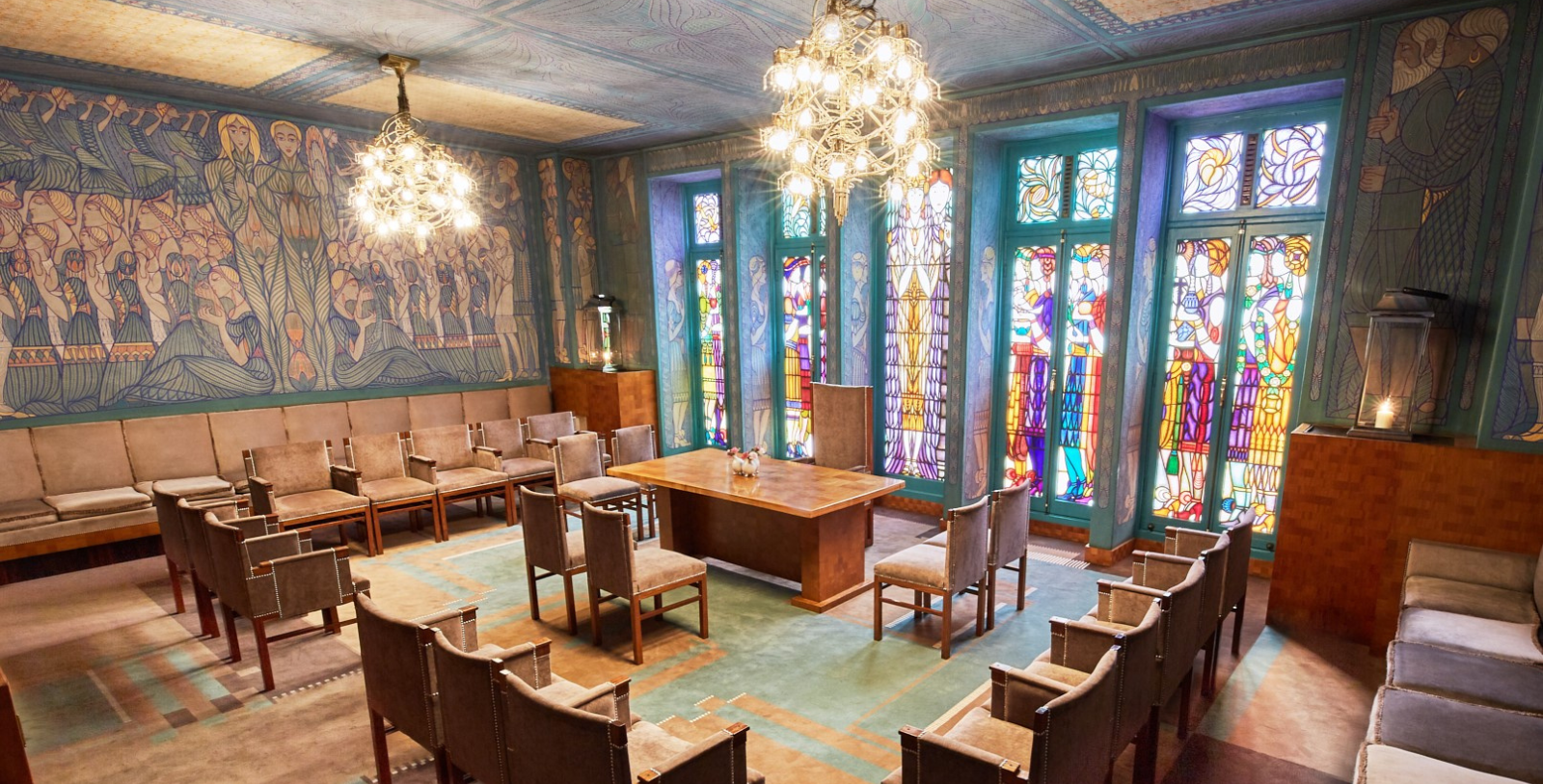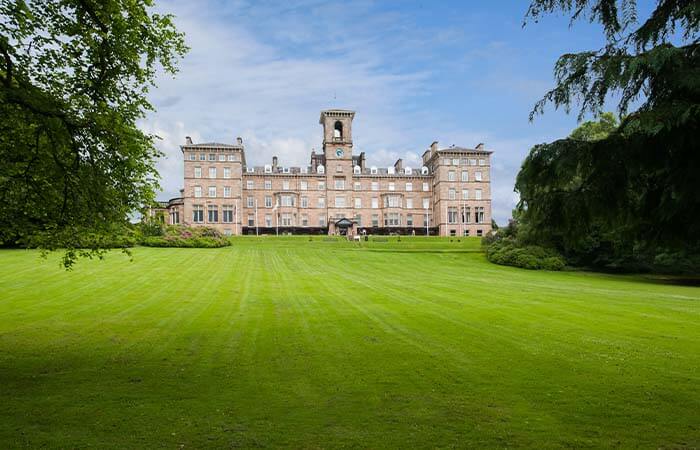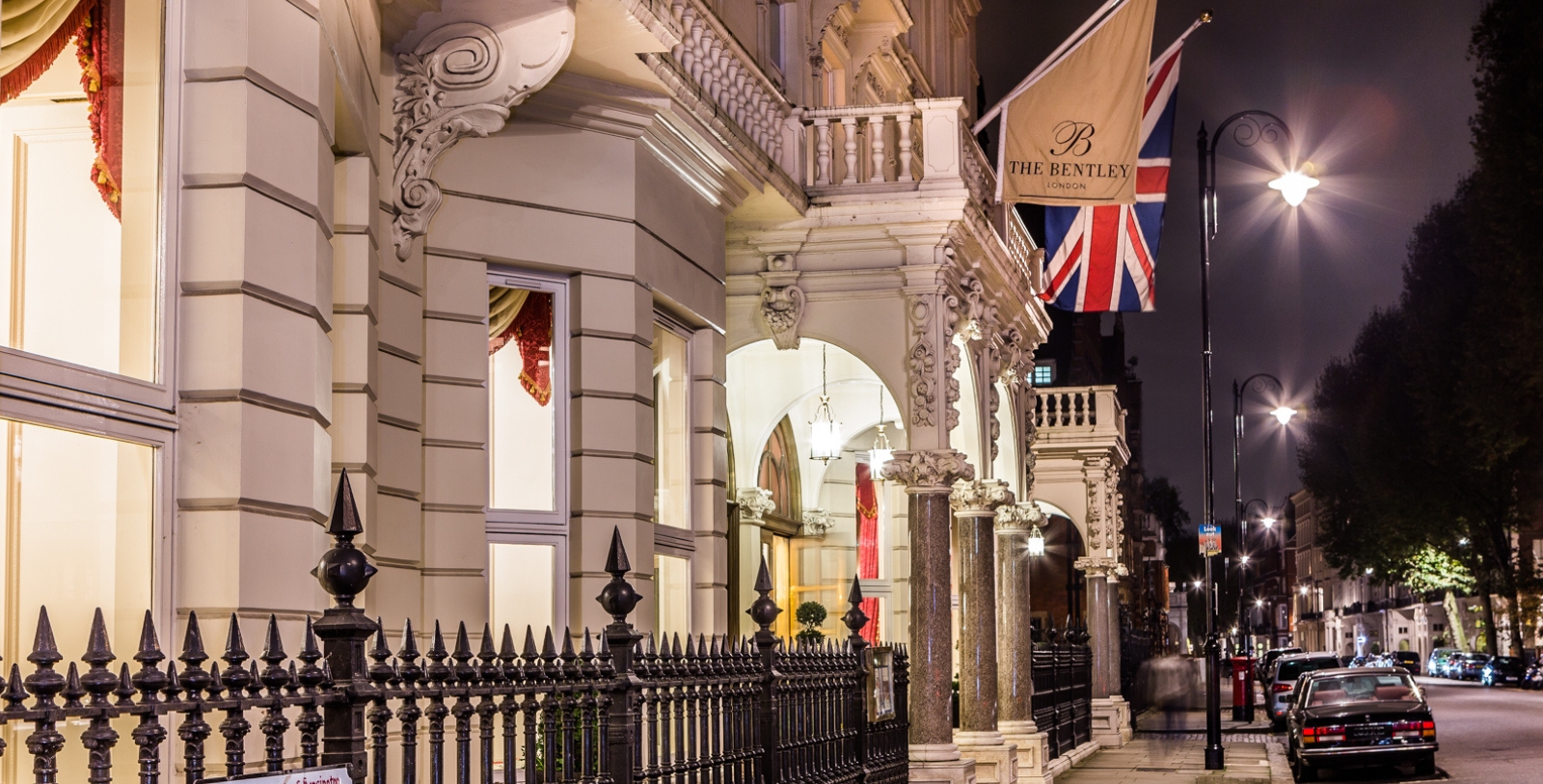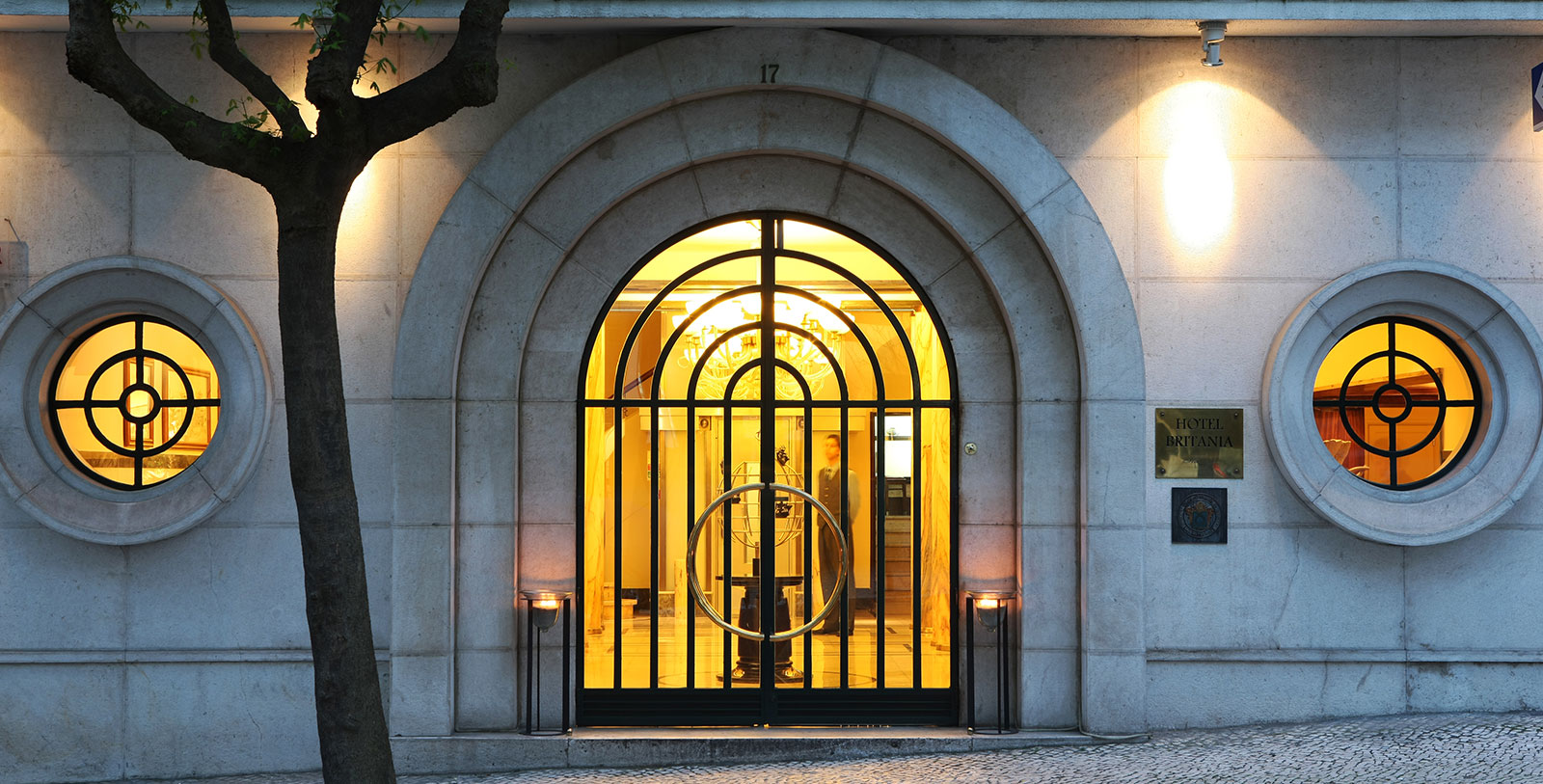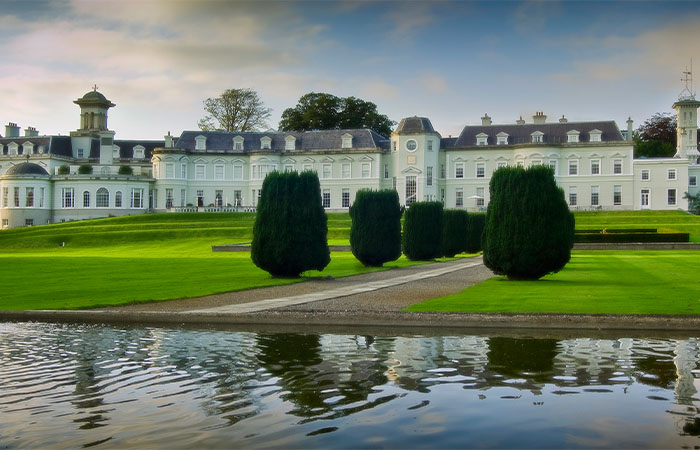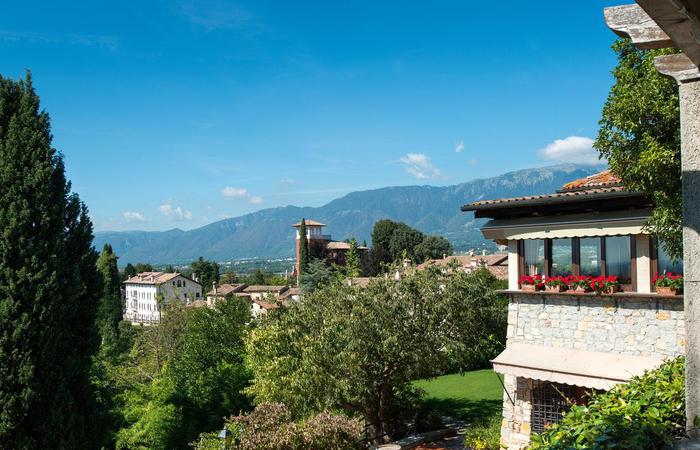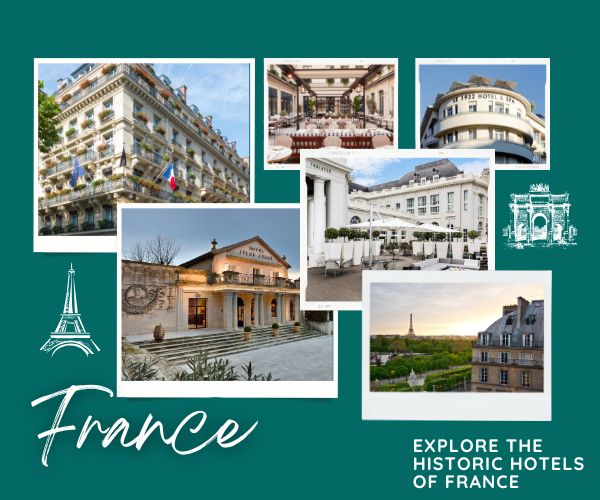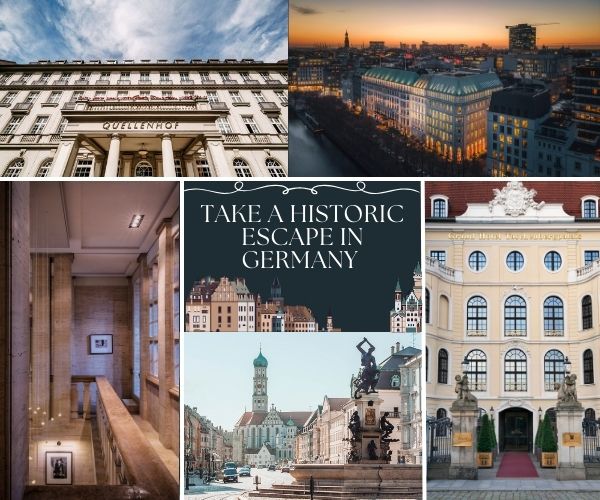Receive for Free - Discover & Explore eNewsletter monthly with advance notice of special offers, packages, and insider savings from 10% - 30% off Best Available Rates at selected hotels.
The 2023 Top 25 Historic Hotels Worldwide® Most Magnificent Art Collections List Is Announced

The 2023 Top 25 Historic Hotels Worldwide® Most Magnificent Art Collections List Is Announced
San Clemente Palace Kempinski (1131)
Venice, Italy
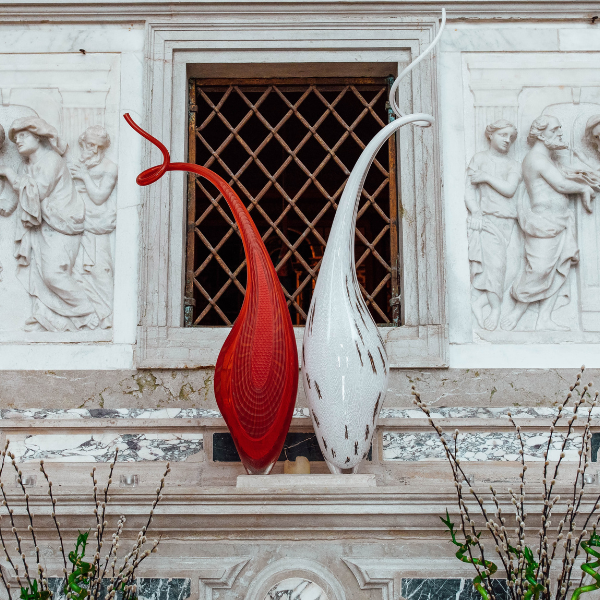 |
The San Clemente Palace Kempinski is set on the exclusive island of San Clemente in the heart of the Venetian Lagoon. The original structure of the hotel dates to the 12th century, and today, it is one of Italy’s most enchanting getaways. Inducted into Historic Hotels Worldwide in 2016, San Clemente Palace Kempinski is an active supporter of the art world and artists. The palace interiors blend cool contemporary and dramatic Renaissance styles, with lofty six-meter ceilings, and intricate details like Terrazzo flooring and Murano chandeliers. Meanwhile, annual art installations appear across the estate throughout the year, especially near the famous Venice Biennale. In recent years, San Clemente Island hosted many world-renowned contemporary artworks by leading artists such as Igor Mitoraj, Tony Cragg, Sylvie Fleury, Gregor Hildebrandt, Carole A. Feuerman, Joana Vasconcelos, Shan Shan Sheng, and Julian Opie. Since San Clemente Island’s location is close to the main event spaces of the Biennale, the hotel has become an ideal location for artists and art admirers. The permanent collection of San Clemente Palace Kempinski includes artwork from hotel owners’ collections, select pieces bought from former exhibitions, and gifted works. The palace’s corridors display art produced by emerging artists to support their craft. Temporary exhibitions can typically be viewed in the lobby, church, and in the gardens. Guests and visitors can request a private tour of the island’s art and the estate from the concierge. |
Tazacorte, La Palma, Spain
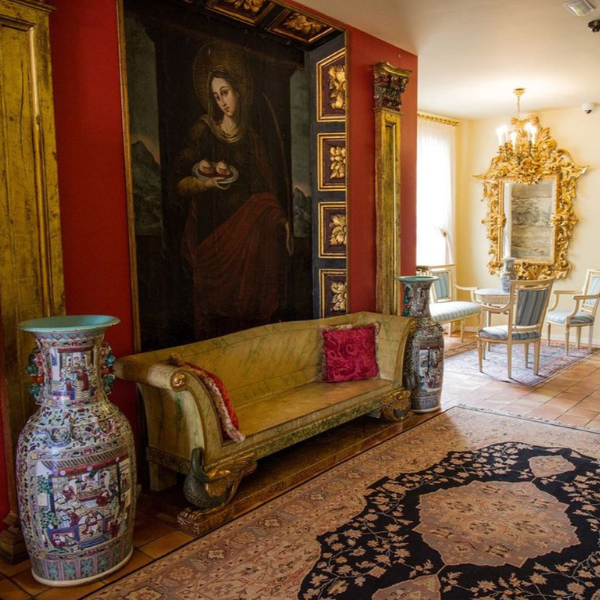 |
Hotel Hacienda de Abajo is a fabulous historic destination in Tazacorte, on the western end of La Palma in Spain’s Canary Islands. Founded in the late 15th century, the estate was the earliest sugar estate on the island of La Palma. The Hotel emerged from a meticulous restoration of the estate and its main house, Casa Principal of Tazacorte, in 2010. Hotel Hacienda de Abajo was inducted into Historic Hotels Worldwide in 2021 and, in the same year, was awarded the Historic Hotels Awards of Excellence “Historic Hotels Worldwide Best in Europe” award. Built in the 17th century by Pedro José de Sotomayor Topete y Massieu, Casa Principal of Tazacorte stayed in the family for centuries. Today, Hotel Hacienda de Abajo reflects the history of the Sotomayor Topete family and their devotion to arts and culture. The noble families that resided in the grand home imported art to adorn their halls from all over the globe, as the island was a major hub for sea trade. Tapestries, furniture, paintings, gilded mirrors, and delicate Chinese porcelain traveled from every corner of the world to decorate Casa Principal of Tazacorte. Today, over 1,300 works of art are part of Hacienda de Abajo’s collection, comprised of the estate’s historic art collection and new acquisitions. Guests may catch a glimpse of French and Flemish tapestries of the 16th, 17th, and 18th centuries; delight in an art gallery with European and American paintings, some dating to the 15th century; appreciate porcelain pieces and Chinese statues from the Tang, Ming, and Qing dynasties; observe religious European carvings from the 16th to the 18th centuries, and much more. This art collection is the largest contribution of art heritage to the island of La Palma since the 17th century. The result is that Hotel Hacienda de Abajo is an unconventional museum, one with an elegant but comfortable atmosphere. Tours of the estate, art collection, and grounds are available upon request. |
Florence, Italy
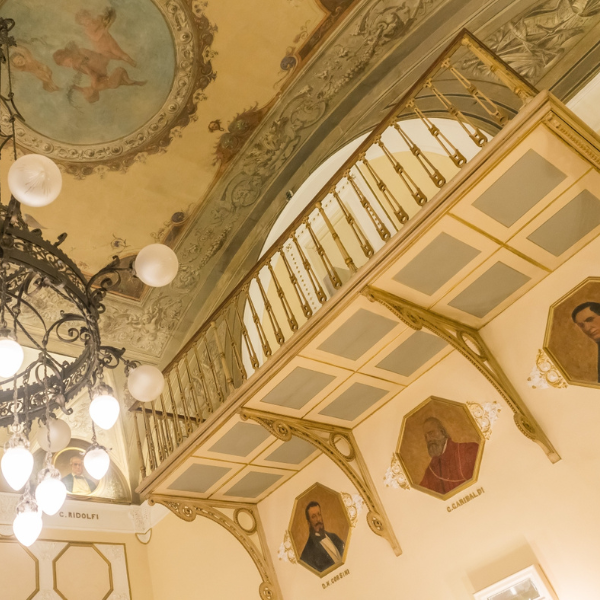 |
The historic Bernini Palace Hotel is located in a 15th-century palace in the heart of Florence, Italy, the birthplace of the Italian Renaissance. The palace was once owned by the powerful Pera family, financiers known for their investments throughout Europe. The famous artwork of the hotel, which was inducted into Historic Hotels Worldwide in 2015, was installed in the 19th century and depicts the unification of Italy. In the mid-19th century, the Palace was an elegant hotel, and Florence was the new capital of the Kingdom of Italy (1865–1871). The hotel was just a short walk from the newly unified kingdom’s parliament, so the hotel's owner changed its name to the Columbia Parlamento Hotel, making it popular with incoming members of parliament. Many guests stayed at the hotel while working and others met at the palace for informal discussions. Among the many artistic treasures of Bernini Palace Hotel is a large, frescoed hall on the first floor with portraits of the protagonists of the Italian unification. Around 1880, an unknown artist (or artists) painted a series of frescoes on the walls of the hall, depicting important figures in the unification of Italy. The series was never completed, as guests can plainly see that there are 20 empty frames visible along the walls. Look out for grotesque motifs, which include winged harpies emerging from a variety of bizarrely colored flowers, as well as leering masks, expressive heads suspended in the void, and dragons with tattered wings. The former Hall of the Italian Parliament is now a grand breakfast room for guests and is also available to rent for private events. The marvelous, frescoed portraits allow guests to enjoy their meal while being immersed in history. |
Amsterdam, Netherlands
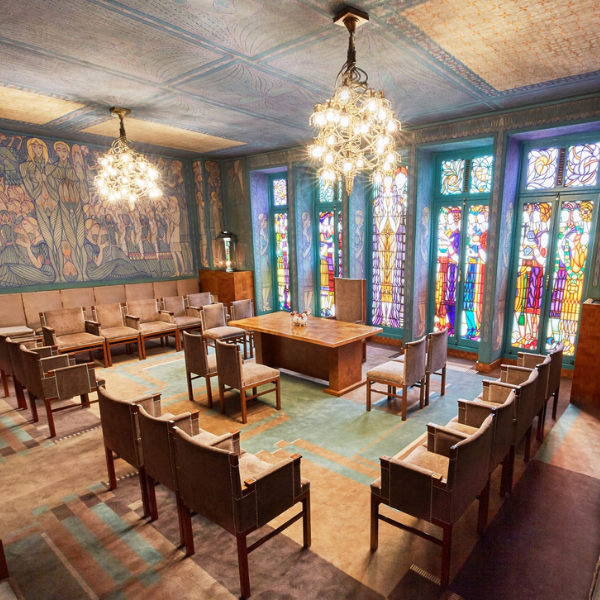 |
Sofitel Legend The Grand Amsterdam possesses a rich history that dates to the 1500s and has been a Historic Hotels Worldwide member since 2018. This storied hotel is a perfect place for art lovers, with its rich history and original works of art by illustrious Dutch painters and sculptors. Artists such as Hildo Krop, Chris Lebeau, Willem Penaat, Joseph Mendes de Costa, John Raedecker, Karel Appel, and Johan Thorn Prikker have all created beautiful art pieces that are displayed at the hotel. The Princenhof building at Sofitel Legend The Grand Amsterdam even participated in the evolution of art in Amsterdam. In 1949, the renowned artist, Karel Appel, was asked to paint a mural for the canteen in Amsterdam’s city hall. This painting can still be admired at the entrance to the hotel’s Oriole Garden Bistro and Bridges restaurant. His style was vastly different from that of artist Chris Lebeau, who painted the room-filling mural in the hotel’s stunning Marriage Chamber. While the new artistic work was not well-received at that time, both murals are considered invaluable art treasures of the city today. Hotel guests can discover the extensive collection of art during the daily historical tour at Sofitel Legend The Grand Amsterdam. |
Rome, Italy
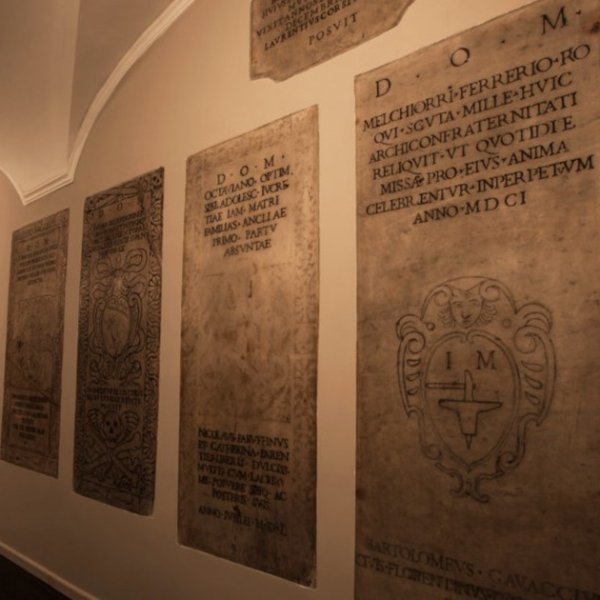 |
Located in the heart of Rome, the historic DOM Hotel is in a 17th-century aristocratic palazzo on Via Giulia, one of the city’s most historic and iconic streets. Via Giulia was once home to numerous gardens and many prominent artists, including Raffaello, Benvenuto Cellini, and later, Francesco Borromini. Today, the DOM Hotel, which was inducted into Historic Hotels Worldwide in 2019, displays its rich heritage through its preserved architecture and historical displays. Even its name is an homage to its past: “DOM” stands for “Deo Optimo Maximo” (“to the greatest god”), a Latin inscription found on the adjoining church next door. The hotel’s art collection can be explored throughout the hotel’s guestrooms and shared spaces. Inside DOM Hotel, guests and visitors discover spaces adorned with refined decor, handcrafted furnishings, international works of art, and original elements of the historic building. Restored and renovated for contemporary comfort, original structural components, such as the exposed brick walls and coffered wooden beam ceilings, were wisely preserved and serve as a natural backdrop to the hotel’s art and furnishings. Among them are an eclectic collection of original photographs, including those of Man Ray and Bert Stern, and three original Andy Warhol silkscreens from the Ladies and Gentlemen series. Also displayed are blocks of marble with ancient religious inscriptions dating back to the Renaissance, which were acquired from the church of Santa Lucia del Gonfalone. The guestrooms and suites at DOM Hotel are curated with original furnishings handcrafted by Italian expert artisans and international works of art. The suites include vases crafted in Belgium, artistic photographs, and original paintings by emerging Columbian artists. |
Amsterdam, Netherlands
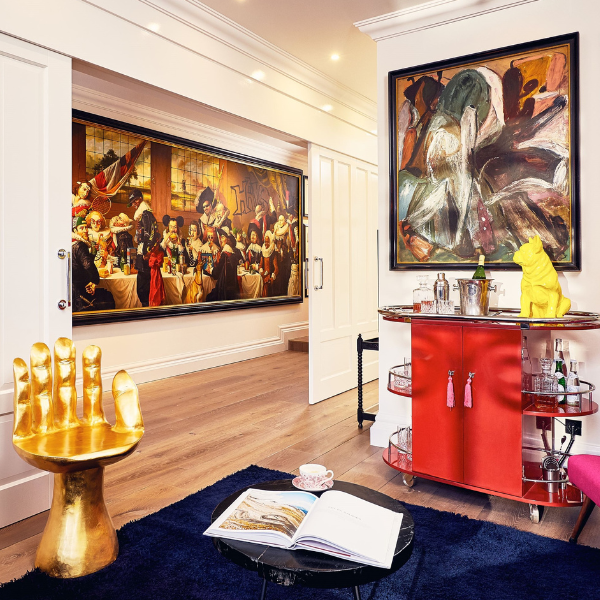 |
Throughout Pulitzer Amsterdam’s illustrious history, the hotel has collected antiques, furniture, artwork, and books to create a one-of-a-kind experience. A member of Historic Hotels Worldwide since 2015, the hotel carefully crafts its suites with special pieces from Pulitzer Amsterdam’s art, music, and antique collections. Each one is unique. For example, the Art Collector’s Suite is an art lover’s dream, evoking the feeling of spending the night in a private gallery. The most renowned piece from the hotel’s collection, Hals Brunch by Thierry Bruet, resides in this suite, as this six-meter-long painting was commissioned and painted specifically for the Pulitzer Amsterdam. It bears a striking similarity to Leonardo De Vinci’s The Last Supper at a distance, but upon closer inspection, guests can find this version’s quirky modern touches. The Antique Collector’s Suite creates a perfect retreat for curious travelers to immerse themselves in the history of the former canal houses that make up the hotel complex. Furthermore, the room’s furniture, artwork, and objects all hold a connection to the past and create a historic ambiance that stretches back centuries. The Music Collector’s Suite is perfect for those who love to collect musical experiences and melodies. Best played on the suite’s vintage record player, guests can enjoy Pulitzer Amsterdam’s impressive collection of LP records ranging from soul, classical, or rock and roll, while surrounded by musical instruments and curated records. These are just a few of the artfully curated themed suites available to book at Pulitzer Amsterdam. Art lovers can also book the hotel’s Paint like a Dutch Master package to learn about the techniques used by artists such as Rembrandt, Vermeer, Jan Steen, and Van Gogh, through a private painting workshop. |
Alamos, Sonora, Mexico
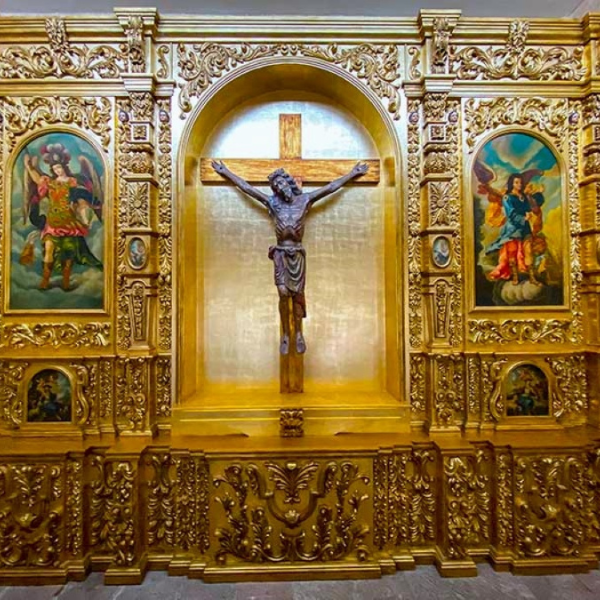 |
The family-owned and operated, Hacienda de Los Santos is a historic resort composed of three renovated and restored Colonial-style mansions, as well as one sugar mill that dates to the 17th century. Cultural heritage travelers will find beautiful religious art and custom designs at every turn on the grounds. The art of Hacienda de Los Santos today is a collection of works, especially religious art, which were all selected, uncovered, or created for the resort by the hotel’s owners, the Swickard family. In the early years of the resort’s renovations, religious art was found throughout the estate’s historic buildings and grounds. Today, much of that collection is displayed within the Chapel of the Saints. At the chapel, a Baroque altar was designed and created in recent years by Mexico's expert woodcarver and artist, Augustin Parra of Tlaquepaque, Jalisco. The three large bells were cast by Mexico's only fourth-generation bellmakers. The art collection of figures, retablos, and ex-votos on display in the chapel includes a carved figure of Saint Anne, which is the collection’s most historic single figure, dating back to the 16th century (and authenticated). Many of the carved religious figures on display came from other churches in Spain, Mexico, and Guatemala, passed from the churches into private hands long ago, and later placed into Hacienda de Los Santos’ collection. The resort also exhibits a 17th-century French hymnal, written in Latin. Each of its individual pages was handwritten and illustrated by a monk. A large oil painting of the Lady of Guadalupe is also featured at the resort. This painting was first installed in a church in Southern Colorado in 1849, which is currently open to guests. (There are guided tours daily at 2:00 p.m. for a small fee.) This marvelous destination resides within the charming town of Alamos, a designated National Monument of Mexico. Hacienda de Los Santos was inducted into Historic Hotels Worldwide in 2015 and was honored in 2021 as the winner of the Historic Hotels Awards of Excellence award for “Best Historic Hotels Worldwide Hotel in the Americas.” |
Hardanger, Norway
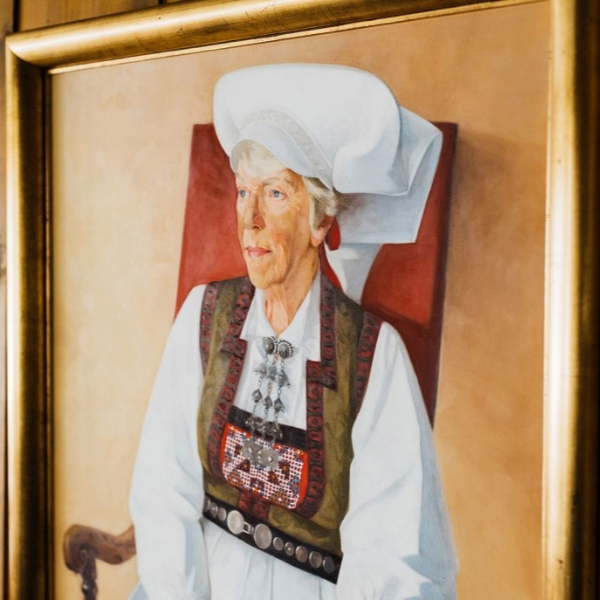 |
One of the most historic hotels in Norway, the iconic Utne Hotel is surrounded by the mountaintops of the magnificent Hardangerfjord. Utne Hotel opened its doors to guests in 1722 and was inducted into Historic Hotels Worldwide in 2012. With its intricate decorative details and a vast collection of antique treasures, visiting this historic hotel today is like walking into a living history book. Along with its own impressive collection of historic Norwegian art and interior detail, including the remarkable painted wood cupboards and wall panels of its formal dining room, Utne Hotel supports local artists through its Kunstannekset, or Art Annex. The Art Annex, which includes guestrooms, emerged when the Utne Hotel invited local Hardanger artists to decorate a guestroom in the Annex. The artists chose the colors and styles for the rooms that harmonize with their art. The choices resulted in assorted color themes for the rooms, each characterized by different artistic expressions. Some guestrooms feature graphics, collages, and oil and acrylic paintings. It is an active gallery exhibit, and some of the art displayed may be for sale. “The art is done justice,” says one Utne Hotel-featured artist Judith de Haan, “when guests live with the art during their visit and experience it through night and day.” Other featured artists include Solfrid Aksnes, Åse Berit Skeie Ulltang, Wim van den Toorn, Ingunn van Etten, and Johild Mæland. These artists are all a part of the local artists forum, Harding Puls. |
Cartagena de Indias, Colombia
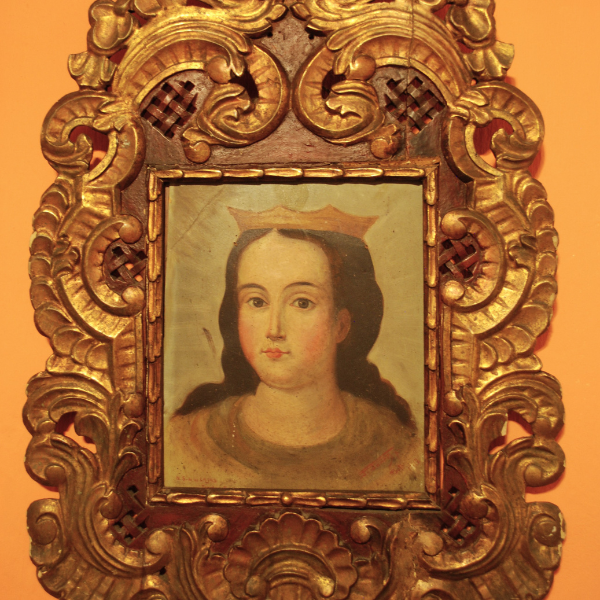 |
Alfiz Hotel is in the historic center of Cartagena de Indias in a 17th-century colonial house that belonged to the British consul and is located between the two oldest squares in the city. Within the walls of this beautiful time capsule, it is possible to discover exciting details of the lives of those who inhabited it: a French liquor smuggler during the Independence, the residence of the British consul, and later a renowned store for Cartagena merchants. A very special feature of Alfiz Hotel is the decoration of its eight exclusively themed rooms that reflect the most important stages in the city's history, from the Conquest to Independence. Those designs also help provide each guest with a resting place that has simple elegance and a connection to the memory of the historic city of Colombia, a UNESCO World Heritage Site. The decorative objects and original furniture, as well as religious works of art, are the perfect setting for those who wish to travel back in time and recall the past. Also notable is the hotel’s literary arts collection: there are more than 300 Gabriel García Márquez books in 22 languages in the hotel library. The author of well-known novels such as One Hundred Years of Solitude and Love in the Time of Cholera lived and worked for many years in Cartagena de Indias. When he learned of the existence of this collection at the hotel, García Márquez sent a personal greeting to the hotel owners! This autographed note is on display in the library for guests to view today. |
Bagac, Bataan, Philippines
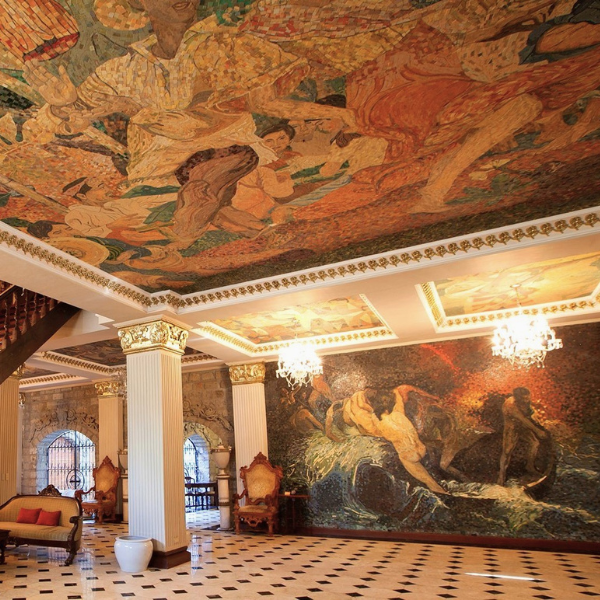 |
Las Casa Filipinas de Acuzar is a resort that is a work of both historic and modern art, as well as a story of Filipino heritage told through art. Inducted into Historic Hotels Worldwide in 2017, and home to Jose Acuzar’s collection of heritage houses, the resort offers historic lodgings restored by a team of artisans and craftsmen. For guests, the resort offers a series of arts and crafts workshops, where visitors can learn more about the different mediums of art created at the resort. Along with hands-on workshops, the resort offers a signature Heritage Walking Tour, an hour-long guided tour across the villages and ancestral houses within the resort. Guests can also experience an immersive tour of the resort’s workshops that offers guests a front-row seat to see artists and craftspeople creating new pieces. Of special interest for visitors who appreciate art is the Hotel de Oriente. An iconic structure within the resort, Hotel de Oriente’s majestic and striking features are due to the intricacy of the woodwork seen throughout its walls, floors, and ceilings. A tour is not complete without a visit to this majestic place. In addition to providing luxurious experiences for travelers, Las Casas Filipinas de Acuzar’s Bellas Artes Projects foundation invests in local and international artists. The foundation provides a platform for experimentation and interdisciplinary collaboration through artist residencies. Internationally acclaimed for its commitment to both hospitality and art, the resort was honored with the Historic Hotels Awards of Excellence “Best Historic Hotels Worldwide Hotel in Asia/Pacific” in 2021. |
Tjøme, Norway
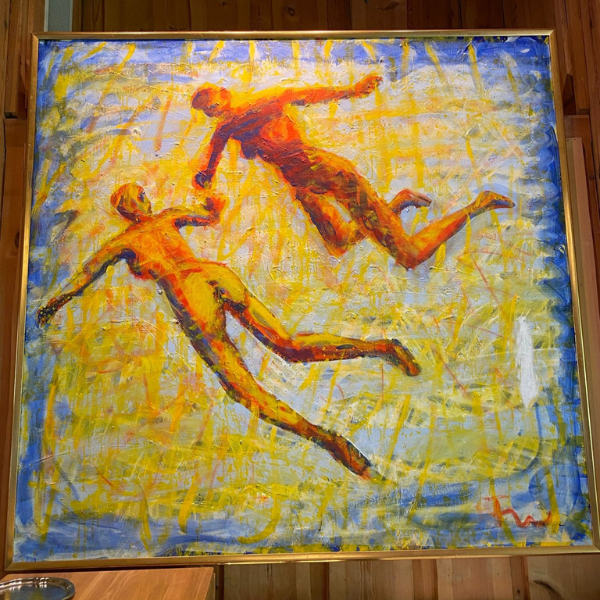 |
Originally built in 1845 as the popular summer country inn, Engø Gård’s art collection blossomed in the early 21st century when new owners brought their love for art to the historic inn. An art historian with a keen interest in Norwegian art, Nina Felling and her husband, Harald Andersen, bought a wide collection of contemporary Norwegian artists, as well as works by other European artists. When their daughter and son-in-law took over the business in 2015, they continued the gathering with several new pieces every year. Over the nearly 25 years the hotel has been in business, this collection has therefore steadily grown. The paintings and photos are spread out throughout the hotel complex, in its restaurants, salons, spa, and guestrooms. The sculptures are placed in the garden next to the terrace restaurant and the spa. Notable pieces in the collection on display for guests include sculptures by Nico Widerberg and Nina Sundby, paintings by Frans Widerberg and Kenneth Blom, and a drawing by Pablo Picasso. |
Warsaw, Poland
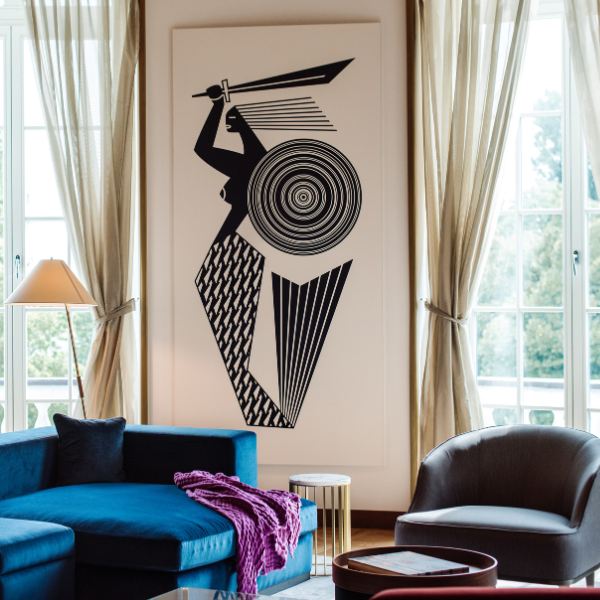 |
Designed in the Neoclassical style by Italian-Polish architect Enrico Marconi, Raffles Europejski Warsaw was intended to be the most extravagant hotel in the Russian Empire when it opened in Warsaw in 1857. Art has been present at the hotel since its grand opening. In its early decades, it housed the Aleksander Krywult Salon, one of the first art galleries in Warsaw, and an art studio shared by several famous Polish artists including Józef Chełmoński and Stanisław Witkiewicz. Raffles Europejski Warsaw began amassing its own art collection in 2014, with the aim to collect works representative of the contemporary art scene in Poland. Today, Raffles Europejski Warsaw’s art collection contains approximately 500 works of modern and contemporary Polish art. The collection specifically features paintings, photographs, installations, graphics, posters, collages, blown glass, and drawings from both established and emerging Polish artists. Over 120 Polish artists are represented in the collection, including Polish Avant-garde works by artists such as Henryk Stażewski and Tadeusz Kantor; as well as the most important representatives of contemporary Polish art, such as Wilhelm Sasnal, Monika Sosnowska, Leon Tarasewicz, and Goshka Macuga. The collection is spread throughout the hotel and guests can admire the best examples of Polish art in their rooms and suites. Paintings, photographs, sculptures, and installations are displayed without descriptions, platforms, or visible security, as a way to create an atmosphere resembling a private collector’s house. The hotel’s lobby contains several outstanding artworks, such as The Borders by Włodzimierz Jan Zakrzewski, a neon light installation welcoming guests in the entrance hall. Guests and visitors can engage with the art through hotel art tours, bookable through the art concierge, or by attending the hotel’s occasional art talks with artists and the collection manager. All guestrooms contain a catalog of the collection for guests’ enjoyment and enrichment. |
Hamilton, Bermuda
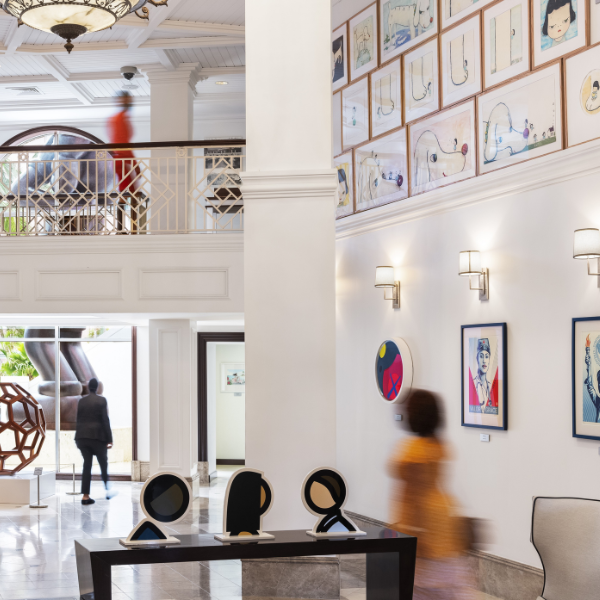 |
The art collection of the Hamilton Princess Hotel & Beach Club, A Fairmont Managed Hotel in Hamilton, Bermuda, is remarkable. Inside the palatial pink hotel, established in 1885 and inducted into Historic Hotels Worldwide in 2018, is a renovated, contemporary space with artworks from some of the greatest names in modern art, such as Pablo Picasso, Henri Matisse, and René Magritte. These innovators, who challenged perceptions of art, laid the foundation for a hotel collection that has embraced the Pop and Op art movements to postmodernism. Guests and visitors can walk through the hotel and its grounds, surrounded by the works of those earlier luminaries, as well as late-20th and early-21st century artists, such as Shepard Fairey, Andy Warhol, Yayoi Kusama, and Keith Allen Haring. The art collection is active; as new works are often moved or rotated around the facility, emphasizing that the hotel is an alternative gallery space. Hamilton Princess & Beach Club, A Fairmont Managed Hotel, curates and arranges the works in a meaningful way to convey meaning within modern art. However, the layout also creates a memorable experience for guests and visitors to the hotel. Complimentary guided tours through the lobby and public spaces are offered to hotel guests during peak seasons, specifically every Saturday from 10 a.m. to 11 a.m. The hotel recommends guests reserve a place on the tour in advance with the hotel front desk. Private art tours for visitors to the hotel are also available through a local art docent. |
Noordwijk, Netherlands
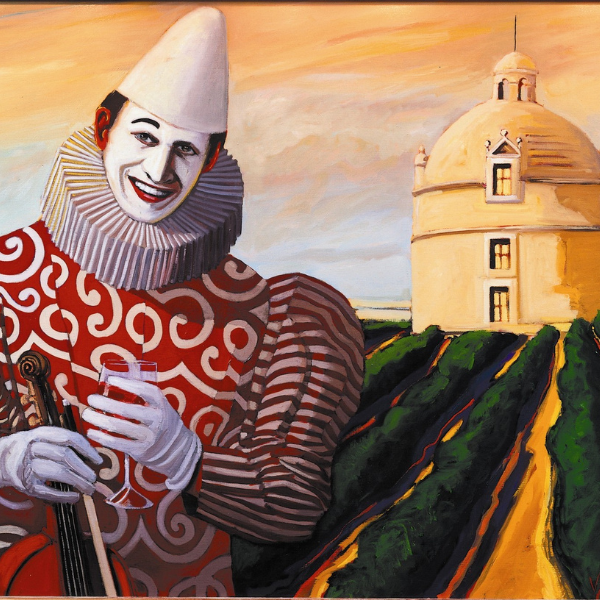 |
Located just a short distance from Amsterdam and The Hague, the Grand Hotel Huis ter Duin is a historic seaside retreat with a fascinating art collection. Established in 1885 and inducted into Historic Hotels Worldwide in 2011, the hotel boasts a fascinating collection of paintings by Dutch artist George van Herwaarde (1938–2011). The collection consists of 50 paintings, each characterized by the pierrots they portray. The pierrot is a character from 18th-century French pantomime performances, recognizable as a sad clown with a painted white face. Each painting tells a different story and shows the pierrots pictured with musical instruments, pets, food, and drinks. The paintings by George van Herwaarde can be found throughout the hotel. Guests are followed by musical pierrots when ascending the grand stairs in the lobby, for instance. In the hotel’s guestrooms, guests can find cutouts of existing paintings hanging on the walls. An impressive piece hangs in Grand Hotel Huis ter Duin’s Michelin-rated restaurant, Latour. The restaurant is named after Château Latour, one of the most esteemed vineyards in the world, and the painting’s characteristic pierrot is pictured with the Château Latour in the background. Next to the painting, a self-portrait of George van Herwaarde can be found with his face painted as a pierrot. The Hotel’s collection of George van Herwaarde paintings started in the 1990s. After the birth of her first grandson, the hotel owner bought a George van Herwaarde painting in honor of the special occasion. This was the start of a collection that grew to over 50 of his paintings, as well as a friendship between the owner and artist. |
Telemark County, Norway
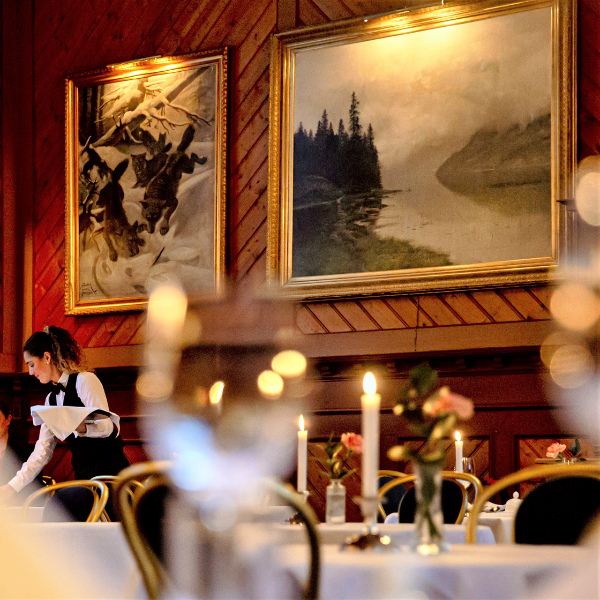 |
The Dalen Hotel in Telemark County, Norway, is known as “the hotel from the fairytales.” Designed by Haldor Larsen Børve, a German-educated architect versed in Swiss style, the hotel exhibits architectural details plucked from traditional medieval churches. Dalen Hotel, which was inducted into Historic Hotels Worldwide in 2012, is adorned with opulent details like dragonheads and soaring spires. Within the historic hotel, there are over 25 original paintings from Norwegian and European artist such as Ludvig Skramstad and Christian August Printz, a sculpture by trailblazing artist Anne Grimdalen, and a large collection of historical furniture from the Norwegian “dragon style” period. Most of the art is from the Norwegian National Romantic era and the following period through the early 1900s. This fantastic collection was also added in recent years, as the original artworks from the early 20th century were lost, destroyed, or sold. Since 2006, the Dalen Hotel’s owner, Mr. Thor Morten Halvorsen, has worked to collect art for the hotel that highlights Norwegian heritage and Norway’s struggle for sovereignty. In the hotel’s state room, guests can look up and admire the largest privately-owned stained-glass ceiling in Norway, dating to the late 19th century. The hotel’s Gourmet restaurant displays some of the grandest surviving examples of Norwegian master woodwork. The dining room itself is preserved in historical condition and is mentioned as one of the hotel's most important sights by the Norwegian National Heritage Board. The hotel has been awarded the Europa Nostra Silver medal, a prestigious cultural and natural heritage award for the conservation of historic buildings. |
Como, Italy
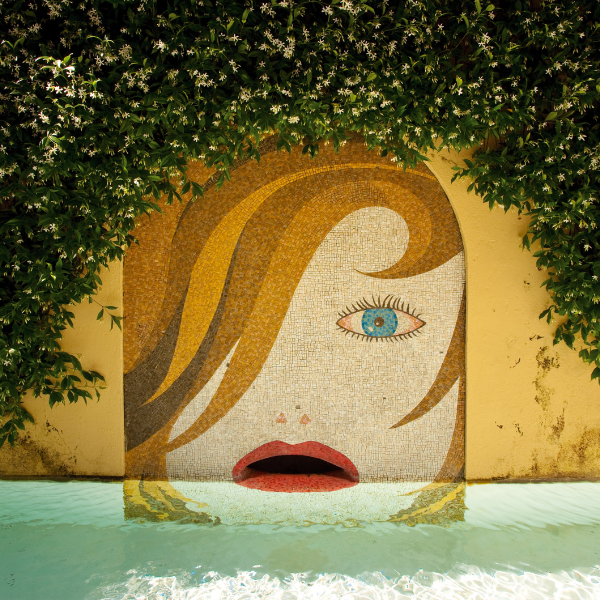 |
Immersed in the beauty of Lake Como and offering a spectacular view of the surrounding Alps, the historic Grand Hotel Tremezzo is a treasured example of the finest preserved Italian palaces. With lush period furnishings, intricate details, and unparalleled views, Grand Hotel Tremezzo offers decadence alongside sensations of harmony and tranquility. Established in 1910, Grand Hotel Tremezzo was inducted into Historic Hotels Worldwide in 2011. A guest favorite of the art pieces is the Happiness Fountain by Ico Parisi, a local Como architect and designer. The fountain is found in the estate’s park area, which the hotel describes as an open-air gallery. Dating back centuries, the land used to belong to Villa Carlotta and its spectacular botanic garden—nature’s palate—is planted with a variety of rare plants and trees. Within the palace walls, Grand Hotel Tremezzo exhibits an art collection owned by Valentina De Santis (owner of Grand Hotel Tremezzo) at the L’Escale Trattoria & Wine Bar. The hotel also displays a collection of silk scarfs from Antonio Ratti, a post-World War II textiles entrepreneur who created the Fondazione Antonio Ratti, one of the world’s greatest textile archives, in Como. In addition, there are original Art Nouveau-style pieces and antique furniture collected by the De Santis family throughout the palace and adjacent buildings. The estate’s 18th-century Villa Emilia, which houses the Grand Hotel Tremezzo’s T Spa, features original mosaic floors. The hotel offers private tours of the palace and its artwork. |
Stockholm, Sweden
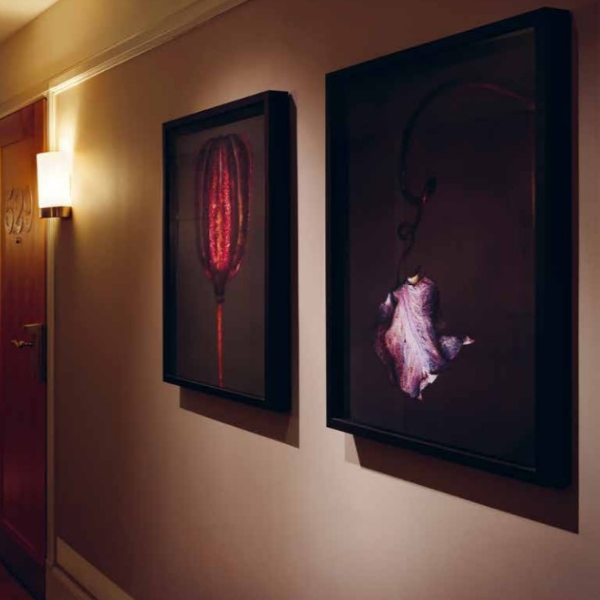 |
Built as an Art Nouveau-style palatial mansion in 1911, and situated close to Sweden’s Royal Theater, the Royal Opera, and prominent galleries, Hotel Diplomat is proud to be a welcoming scene for artists and valued guests. The hotelier family that owns Hotel Diplomat, in collaboration with its partners, is pleased to share with visitors the private modern art collection that they curated for the hotel. Works by notable Swedish artists are displayed throughout the hotel, including carefully curated displays of photography by some of Sweden’s most renowned contemporary artists. This includes pieces by world-renowned artists such as Denise Grünstein, Maria Friberg, Anneè Olofsson, Daniel Sandberg, Carl Fredrik Reuterswärd, Helene Schmitz, and David Svensson. In addition to its permanent art collection, the hotel rotates new, temporary exhibits in The Gallery. This art-forward approach to hospitality does not stop at the guestroom door. The guestrooms themselves were designed and decorated by part-owner and chairperson Anna Cappelen, in collaboration with interior designer Helene Follin from HOS Haga. Follin herself was inspired by the unique Art Nouveau-style building, blending traditional elegance with contemporary design. |
Copenhagen, Denmark
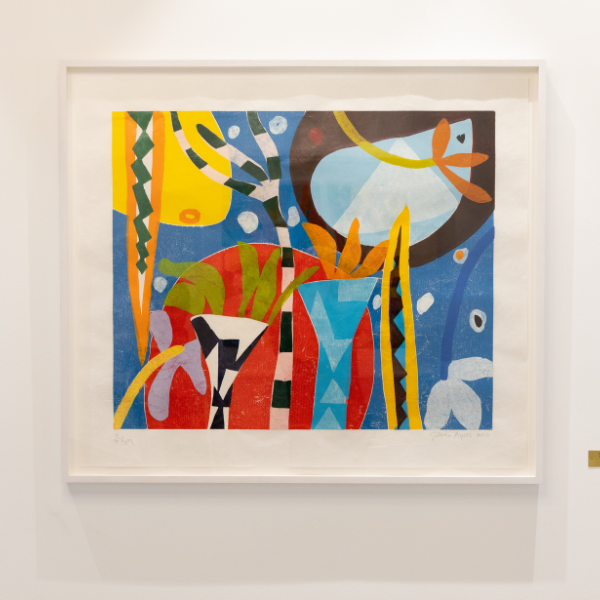 |
Located in what once was the Central Post & Telegraph Head Office in Copenhagen, Denmark, the Villa Copenhagen (1912) today offers luxurious and unique accommodations in the heart of the ancient Nordic city. Visitors are treated to an intimate display of selected artworks by renowned artists, including: Jaume Plensa, Gillian Ayres, Ian McKeever, Birk Bjørlo, Ann Edholm, Astrid Sylwan, Åke E:son Lindman, Minako Masui, Ulf Rollof, Bente Stokke, Camilla Løw, Sirous Namazi, Pål Vigeland. This group also includes celebrated Danish artists, such as Per Kirkeby, Olafur Eliasson and artist group, Superflex. Upon arrival at Villa Copenhagen, visitors are greeted by the mesmerizing works of esteemed Catalan sculptor, Jaume Plensa. This striking assembly is comprised of two bronze sculptures: Julia and Minna’s Words. Deliberately positioned at the main entrance, Julia’s pensive form invites hotel guests and weary travelers to unburden themselves and join her in a moment of quiet contemplation. Delicately suspended from the foyer ceiling, the elegant shape of Minna’s Words teases curious art lovers with its coy intrigue. Villa Copenhagen’s art collection possesses a multitude of qualities that make it truly fascinating and appealing to cultural heritage travelers. Firstly, the collection boasts a diverse range of artistic styles, spanning from classical masterpieces to contemporary works, ensuring there is something for every artistic preference. Moreover, the collection includes pieces from both renowned international artists and emerging talents, creating a dynamic and engaging mix of artistic voices. Each artwork has been thoughtfully placed throughout the hotel, adorning the hallways, restaurants, and public spaces, creating a unique environment that engages and captivates visitors. |
Yokohama, Japan
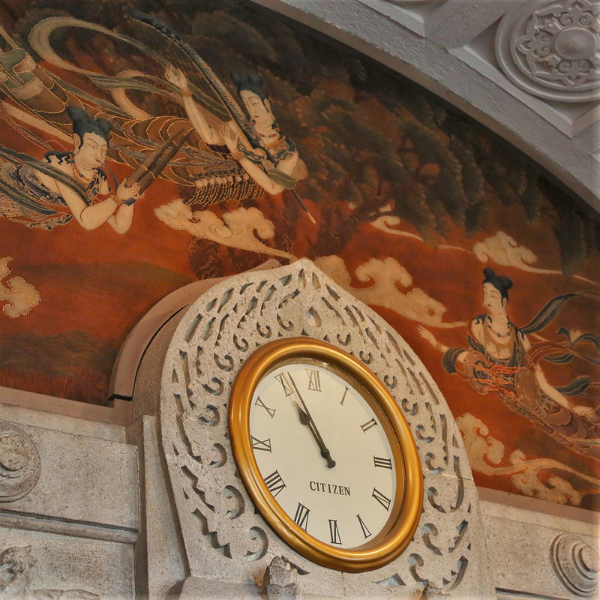 |
When guests enter Hotel New Grand through its historic main entrance and walk up its grand staircase to the second-floor lobby, they experience a majestic blend of European Art Deco and traditional Japanese architecture. The foyer has an ornate white plaster, detailed with motifs modeled after ancient Indian art. Storytelling silk tapestries hung on the upper walls contrast with the white plaster and patterned, washi paper lanterns drape down from the ornate ceiling. Art in the lobby on the 2nd floor of the main building is open to the public. In addition, there are two permanent galleries to learn about the historical transition of the hotel that invite guests to take a trip back in time. The galleries display items unique to the period, such as photographs and pamphlets, typewriters and tableware, a chronological table, and even a 1/100 diorama model of the main building at the time of its opening. These exhibits are seen by many guests and visitors to the hotel. The historic building has been certified as a Historic Architecture of Yokohama city (1992), and Industrial Modernization Heritage by the Ministry of Economy, Trade, and Industry (2007). Hotel New Grand was inducted into Historic Hotels Worldwide in 2012. With its rich history and original works of art, Hotel New Grand is a Yokohama landmark that cannot be missed by art lovers traveling through the city. |
Paris, France
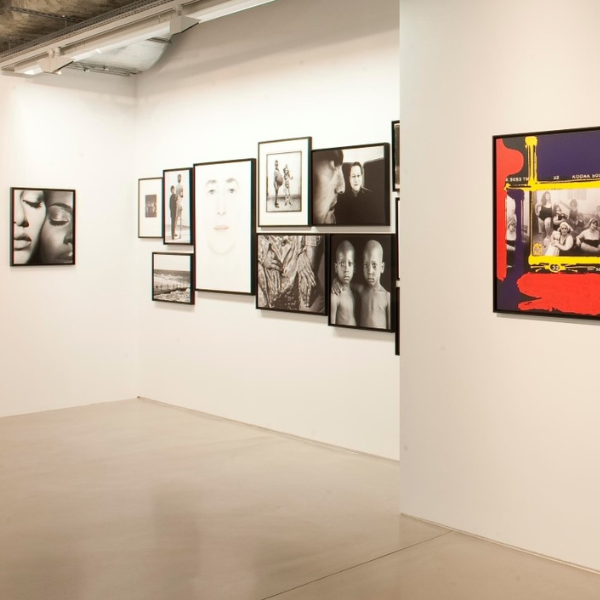 |
Established in 1928, L’art Centre of historic hotel Le Royal Monceau, Raffles Paris features the Art Gallery by Bel Air Fine Art, a private movie theater, a contemporary art bookshop, and even an art concierge. Acting as a gateway to the contemporary art scene in Paris, the culturally conscious Art District Gallery (a collaboration between the hotel and the Bel-Air Fine Art group) welcomes artists, connoisseurs, collectors, patrons, and art professionals alike. Thematic exhibitions are displayed in the gallery and in the public spaces of this grand historic palace-turned-hotel. Visitors and guests also enjoy access to the first contemporary art bookshop within a Parisian luxury hotel, La Librairie des Arts. Keeping pace with the latest happenings on the cultural and arts circuits worldwide, this specialty emporium holds more than 700 titles. This unique venue also sells accoutrements for artists and architects, alongside limited editions and works of unusual formats. The Katara Cinema offers integrated state-of-the-art sound and projection equipment in 35 mm, digital, and 3D. The screening room is available to organize private screenings, watch auctions, broadcast concerts, and organize seminars. The art concierge at Le Royal Monceau, Raffles Paris facilitates access to previews, openings, performances and concerts, guitar lessons, and even cultural activities for children. The hotel’s art blog can be found at Art For Breakfast. |
Paris, France
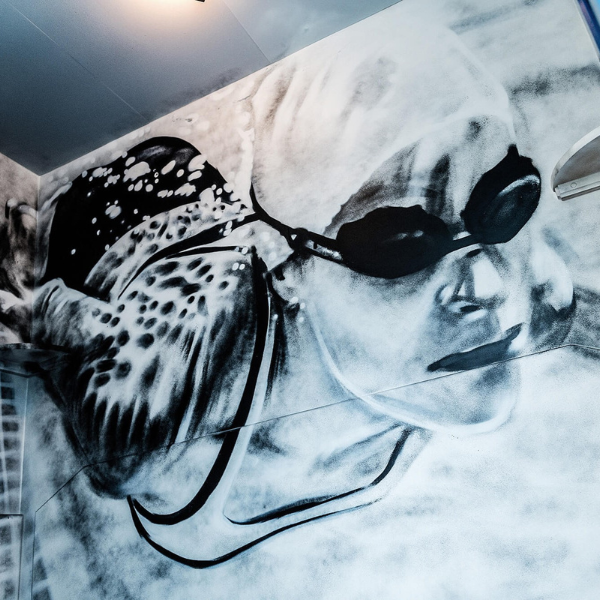 |
The Hôtel Molitor Paris–MGallery by Sofitel opened as an Art Deco-style sports complex with a swimming pool in 1929. During its heyday, it was a popular attraction for the socialites of Paris. When the bathhouse closed in 1989 and classified as a historical monument, it was taken over by street artists. They created their own open-air artist’s studio, using every surface of the building as a canvas. At first, graffiti started to appear on the outside walls of the building, then on the railings and inside the drained swimming pools. By the 1990s, layers of color brought new life and the bathhouse was itself a work of art. These were some of the first graffiti works by street artists who have since become very well known. The site was a venue for concerts, parties, and fashion shows organized through the Compagnie des Maîtres-Nageurs (“Lifeguard Company”). Today, Hôtel Molitor Paris–MGallery by Sofitel, which was inducted into Historic Hotels Worldwide in 2018, has a quirky personality and offers a remarkable experience to all who visit. True to its colorful past, the hotel continues to invite these artists to return and continue their work. Every one of the 78 dressing cubicles surrounding the winter pool has been taken over by an artist, from floor to ceiling, to produce a gallery of contemporary urban art. In cubicle No. 166, discover the joyful universe of street art characters called Gouzous by Jace, and the malicious presence of cartoon cat, Monsieur Chat, in cubicle No. 188. Interact with Collectif 9ième concept art stickers, Francs Colleurs; snap a photo of one of the walls of Marko93’s cubicle No. 114 to reveal what lies hidden there; and be carried away by the poetry of Mademoiselle Maurice‘s origami in cubicle No. 40. To immerse oneself in the hotel’s art scene, the hotel recommends a guest package that includes a private, guided tour and a copy of the book, MOLITOR: VIBRATIONS ARTISTIQUES. |
Oslo, Norway
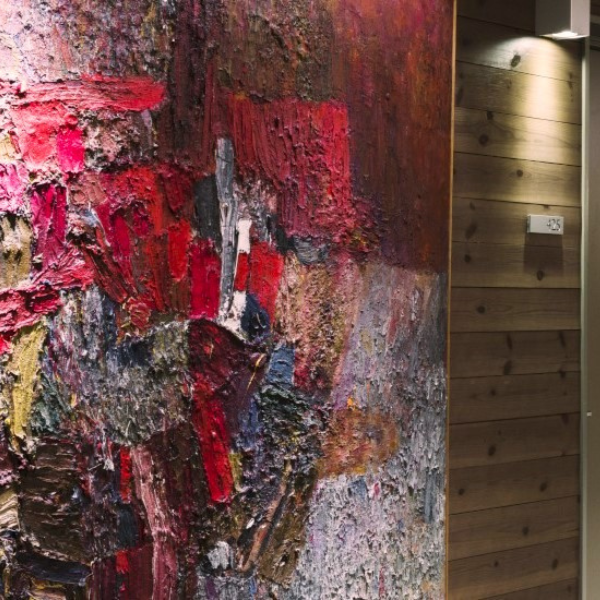 |
Originally a private residence established during the First World War, and renovated right after the Second, today Lysebu is a destination for outdoor enthusiasts wanting to explore Norway’s natural wonders. It is also an active partner of the Henie Onstad Art Centre. In 2007, this Norwegian hotel kicked off its collaboration with the arts center, which allowed Lysebu to exhibit works from the center’s collection. The new in-house exhibit at Lysebu emphasizes Norwegian and Danish art, highlighting the connections that constitute the core of Lysebu’s non-profit enterprise. In the late 1940s, Lysebu was donated to The Danish-Norwegian Cooperation Fund, in appreciation of the aid that Norway received from Denmark during the German occupation. Lysebu is still owned by The Danish-Norwegian Cooperation Fund, which uses the income generated by the hotel to support its greater mission. With that tradition in mind, Lysebu stands by the claim that it is more than a hotel or restaurant; displaying Danish and Norwegian art together is an expression of its core values and its history. After three years of collaboration between the hotel and the arts center, the relationship grew. Today, Lysebu is a central, permanent exhibition venue for art owned by the Henie Onstad Art Centre. A variety of artists are represented in the halls of Lysebu, including Danish artists. The selection encompasses the works of important artists, whose abstract idiom renewed the visual arts in Norway after World War II, and for whom nature provided constant inspiration. Gunnvor Advoccat, Carl Nesjar, Knut Rumohr, Inger Sitter, Olav Strømme, Kåre Tveter, and Jakob Weidemann are just a few of the artists whose works have been displayed at Lysebu. The hotel displays art throughout the historic building, including its guestroom halls, where visitors can appreciate it. |
Montreal, Quebec, Canada
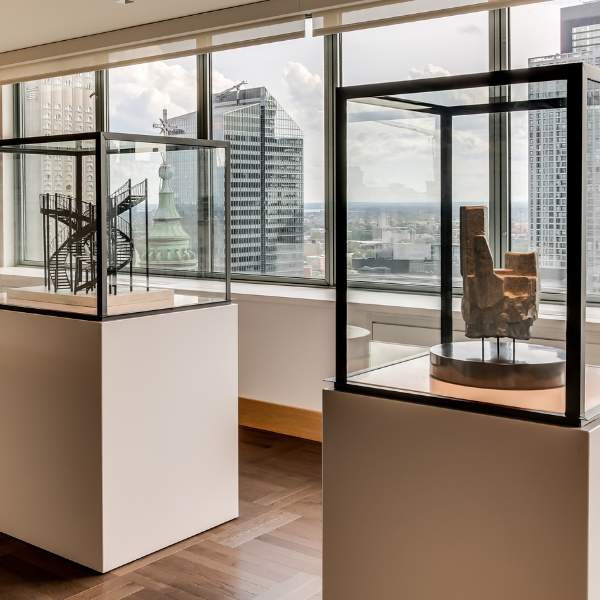 |
Designed by the prestigious architects of the Canadian National Railway Company, Fairmont The Queen Elizabeth is a legendary hotel in Montreal. Established in 1958 and inducted into Historic Hotels Worldwide in 2018, it was among the first hotels in North America to feature modern amenities like escalators and central air-conditioning. Furthermore, this fantastic historic hotel has an art collection to match its historic grandeur. The collection combines at least 123 works by 37 renowned contemporary artists from Quebec and other Canadian provinces, including Michel de Broin, Patrick Coutu, Nicolas Grenier, and Geneviève Cadieux. This amazing assortment of sculptures, paintings, photographs, and drawings from myriad disciplines will surprise both art amateurs and aficionados. The hotel’s owner, Ivanhoé Cambridge, curated the hotel with the philosophy that art enlivens spaces and fuels an exchange of ideas, while creating a sense of community among staff and visitors. The hotel also holds that investing in art contributes to Quebec’s cultural heritage and Montreal’s identity. Because of this initiative, the hotel’s attention to design attracts art admirers, tourists, and locals alike. Much of the hotel’s collection is exhibited in the public areas of the hotel. Pieces can be found lining the walls of guest floor hallways, meeting rooms, and executive suites. Fairmont The Queen Elizabeth offers private art tours with a local guide upon request which last approximately 90 minutes. |
Guadalajara, Mexico
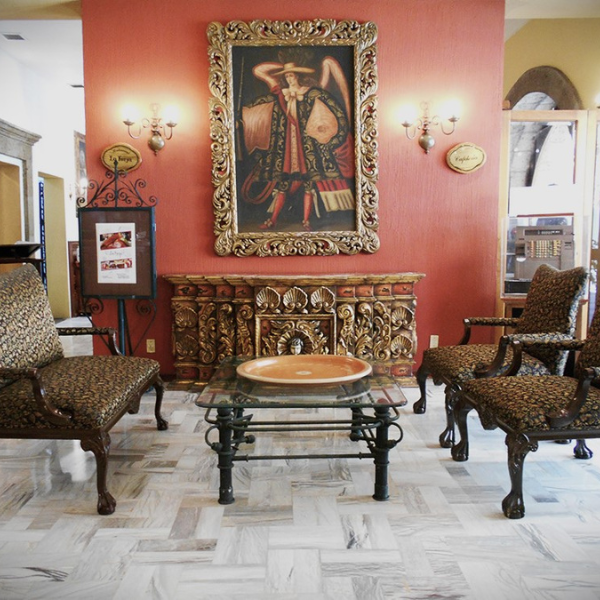 |
The Hotel de Mendoza’s curated art collection emphasizes and celebrates the rich history of Guadalajara and the state of Jalisco. Hotel de Mendoza was built on the site where the historic Santa Maria de Gracia Convent was founded in 1588, the first Catholic cathedral of the city. During the hotel’s construction, the original arcade of the façade and the arches that adjoin the 16th-century temple were preserved. These 16th-century features can be seen from the pool area today. Among its exhibited artwork within the hotel is its 20th-century Mexican art collection, which includes Rangeliano furniture hand-painted by Alejandro Rangel Hidalgo and beautiful Baroque-style paintings by the contemporary Mexican artist Agustín Parra. Parra, who was an artist commissioned at one time by Pope John Paul II, was named official supplier of the Vatican. The hotel also exhibits a beautiful mural painted by the celebrated Mexican artist José Maria Servin. Hotel de Mendoza was inducted into Historic Hotels Worldwide in 2016. |
Hong Kong, China
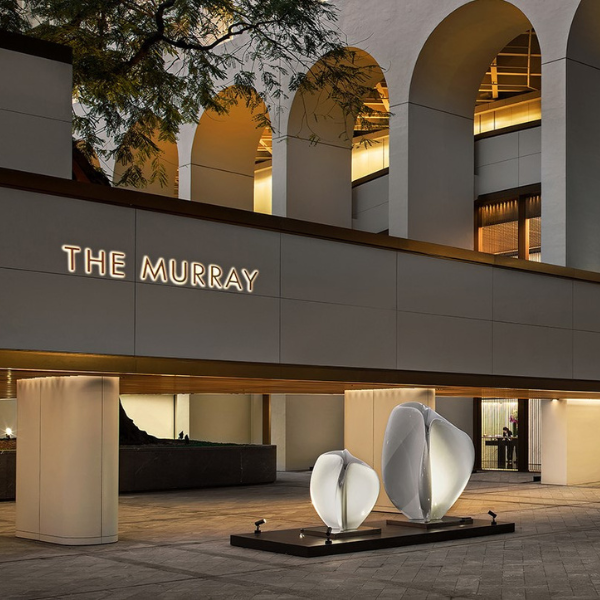 |
The Murray Hong Kong, a member of Historic Hotels Worldwide since 2019, dates to 1969, and displays an eclectic, modern art collection that reflects the city's international, cosmopolitan influences. A monument to Modernism, the Central District high-rise was first established as the Murray Building, an office for government workers in Hong Kong. However, the structure was then transformed into a luxury hotel later in 2018. It was originally designed by innovative British Modernist architect Ron Phillips, who also participated in the hotel’s renovation during the 2010s. The renovations preserved its signature Midcentury Modern features, such as soaring exterior archways, high ceilings, and recessed windows. The hotel complimented the design with bold sculptures, provocative paintings, and other pieces by artists from all over the world. On Murray Lawns, guests and visitors are greeted by a variety of sculptures: Flow by Iraqi-born Dame Zaha Hadid; The Bite and Ginkgo Mantle by David Harber, based in the U.K.; Awilda's White Head by Spanish artist Jaume Plensa; Intimidad by another Spanish artist, Isabel Miramontes; and Glitter, a stainless-steel piece set against the manicured hedgerow by renowned Hong Kong artist Mok Yat San. Step inside and discover more works in the hotel's lobby, halls, and Popinjays rooftop bar and restaurant. The Murray Hong Kong occasionally offers public tours of its artwork. |
“Discover and experience the many magnificent art collections located within Historic Hotels Worldwide,” said Lawrence Horwitz, Executive Vice President Historic Hotels of America and Historic Hotels Worldwide. “Support for artists and endowments to acquire and sustain art collections has been a tradition of many of the founders and builders of historic hotels; fortunately, this tradition continues through the dedication of current ownership and their passion for making it easy for guests of these iconic and legendary hotels to experience some of the finest art collections in the world—while staying at a historic hotel.”
Read more:
The 2023 Top 25 Historic Hotels Worldwide Most Magnificent Ceilings and Domes
2023 Top 25 Historic Hotels Worldwide Afternoon Tea Experiences
The 2022 Top 25 Historic Hotels Worldwide Holiday Traditions and Spectacular Displays
2022 Top 25 Historic Hotels Worldwide Most Magnificent Art Collections
2022 Top 25 Historic Hotels Worldwide Most Historic Golf Courses List



















